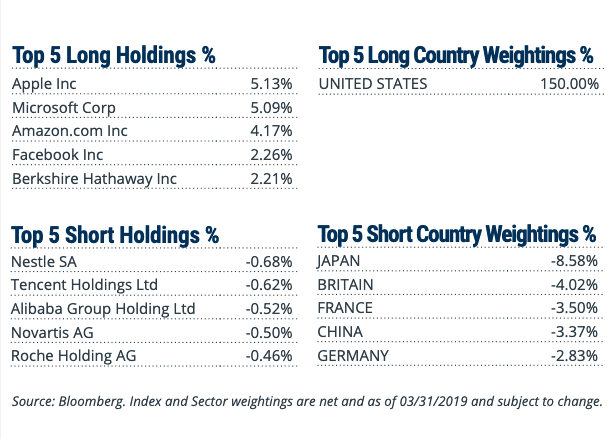As the U.S.-China trade war goes into extra minutes, the effects on China could be starting to surface as the world’s second largest economy saw its manufacturing activity shrink in the month of June to its lowest level since January. In turn, this could feed into a continued preference of U.S. equities over international equities.
A private survey revealed that the Caixin/Markit factory Purchasing Managers’ Index for June was 49.4, which represented the lowest since January when the indicator came in at 48.3.
A Reuters poll of analysts were expecting the indicator to show 50 after May’s reading showed 50.2. A PMI reading above 50 typically shows an expansion and a contraction for under 50.
“Overall, China’s economy came under further pressure in June,” said Zhengsheng Zhong, director of macroeconomic analysis at CEBM Group wrote in a report.
“It’s crucial for policymakers to step up countercyclical policies. New types of infrastructure, high-tech manufacturing and consumption are likely to be the main policy focuses,” Zhong added.
Investors Preferred U.S. Equities
Now that the second quarter of 2019 has come to a close, the penchant for investors to pour into U.S. equities over international markets continued in June, according to the latest Relative Weight Spotlight from Direxion Investments.
Despite a number of roadblocks heading into 2019 after a rough fourth-quarter market showing to end 2018, the U.S. economy rebounded in the first quarter this year, beating analysts’ expectations of 2.5 percent growth with a 3.2 percent growth number. As such, investors have been quick to lean on the U.S. even if a trade deal with China went sideways in May.
For investors looking for continued upside in U.S. equities over international equities, the Direxion FTSE Russell US Over International ETF (NYSEArca: RWUI) offers them the ability to benefit not only from domestic U.S. markets potentially performing well, but from their outperformance compared to international markets.
“Relative flows between U.S. and International ETFs have moved in the same direction as relative performance in 8 of the last 12 months, with February, March, April and May 2019 all seeing ETF flows align with monthly performance,” the Relative Weight Spotlight post noted. “May saw the largest relative strength in flows in favor of International stocks since March of 2018, with U.S. ETFs seeing almost $16.0B in net redemption activity while International ETFs saw over $2.2B in net creations.”

“June has seen this trend continue with U.S. stocks outperforming International shares, and ETF investors are sharply moving back to the U.S. after redeeming throughout the month of May,” the post added. “Over the first 7 trading days of June, ETFs specifically targeting exposure to the U.S. have taken in $4.64B more relative to International ETFs, indicating that relative strength in flows has quickly returned in favor of domestic exposure.”
The fund’s long positions include holdings that helped the S&P 500 and Nasdaq Composite reach highs like Apple and Microsoft, which just hit $1 trillion in market capitalization.
Short country positions include Japan, which saw a surprise drop in factory data the same time U.S. equities were doing better than expected in first-quarter earnings.

For more market trends, visit ETF Trends.

